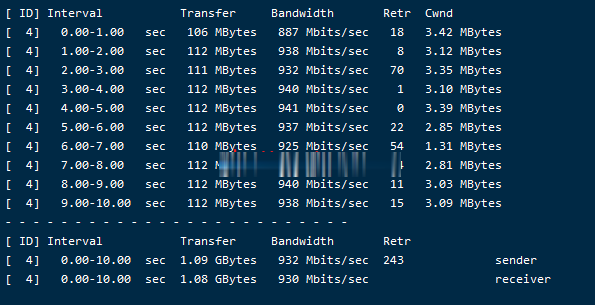impactedm
EDM 时间:2021-01-27 阅读:()
SequenceMatters,ButHowDoIDiscoverHowTowardsaWorkflowforEvaluatingActivitySequencesfromDataShayanDoroudi1,KennethHolstein2,VincentAleven2,EmmaBrunskill11ComputerScienceDepartment,2Human-ComputerInteractionInstituteCarnegieMellonUniversity{shayand,kjholste,aleven,ebrun}@cs.
cmu.
eduABSTRACTHowshouldawidevarietyofeducationalactivitiesbesequencedinordertomaximizestudentlearningWerecentlyproposedtheSequencingConstraintViolationAnalysis(SCOVA)methodtohelpaddressthisquestion.
Inthispaper,weproposehowSCOVAcouldbetransformedintoaworkflowinLearnSpheresothatotherresearchersandpractitionerscanfindanswerstotheaforementionedquestionintheirowndatasets.
Wehopethatsuchaworkflowwillleadtomoreandbetterresearchintothisimportantquestion,aswellasinterestingnewfindingsforboththeeducationaldataminingandlearningsciencescommunities.
Keywordssequencing,ordering,IntelligentTutoringSystems,LearnSphere,DataShop,workflow.
1.
INTRODUCTIONHowtosequenceeducationalactivitiesisanimportantpedagogicalquestion[12].
Muchoftheexistingworkonsequencingactivitiesconsistsoftheoreticalanalyses[2,4,7]andempiricalstudies[1,13,5,11].
Whileempiricalstudiescanhelpaddressquestionsthatcomparetwoorthreedifferentwaystosequenceacurriculum(e.
g.
,whethertopicsshouldbeblockedorinterleaved),itcannoteffectivelyscaletoanalyzingthemyriadofpotentialsequencesthatcouldbeconsidered.
However,educationaldatamining(EDM)techniquescanenableonetosimultaneouslystudydifferenttypesofsequencesbasedonpastdata.
Werecentlyproposedonesuchmethod—SequencingConstraintViolationAnalysis(SCOVA)—forcomparingtheefficacyofdifferentsequencingconstraintsgivenadatasetthatisrichinthevarietyofsequencesitexplores[3].
SCOVAcanbeusedtoanalyzeawidevarietyofsequencingconstraints,suchasprerequisiterelationships,constraintsonwhendifferentlearningmechanismsshouldbeintroduced,blocking,interleaving,andspiraling.
SCOVAcanbothbeusedtobetterunderstandhowproblemsshouldbesequencedinspecificlearningenvironments,includingintelligenttutoringsystems(ITSs),aswellastofindsomegeneralizabletrendsthatmayinformthelearningsciencesliterature(e.
g.
,onwhetherblockingorinterleavingismoreeffectiveorinwhatorderlearningmechanismsshouldbesupported).
SCOVAcanalsobeusedtoinformthecreationofadaptivepoliciesforITSs.
However,SCOVAwillmostlikelynotbeusedforanyofthesepurposesifitjustremainsinapaperthatafewresearchersmight,atbest,readandcite.
Rather,itsbenefitwilllikelyonlyoutlivetheconfinesofaone-offEDMpaperifitisreleasedasaworkflowonaplatformlikeLearnSpherethatisusedbyresearchersandpractitioners.
Ifreleasedassuchaworkflow,SCOVAcanalsointroduceresearcherswhomaynothaveotherwiseconsideredthequestionofhowactivitiesshouldbesequencedintheirlearningenvironmentstofindanewfoundinterestinthisarea,whichwebelieveisbecomingincreasinglyimportanttoboththelearningsciencesandeducationaldataminingcommunities.
2.
WORKFLOWMETHOD2.
1DataInputsSCOVAisapplicabletodatasetswithsubstantialvariabilityinthetypesofactivitysequencesthatstudentscomplete.
Thisvariabilityistypicalofmanydatasets,includingonesthatincluderandomnessinhowproblemswerepresentedtostudents(e.
g.
,[9]),oneswhereadaptivepolicieswereusedforproblemselectionresultinginsequencesthatvaryfromstudenttostudent(e.
g.
,[10]),andoneswherestudentsareabletodochoosewhichproblemstoworkonthemselves(e.
g.
,[8]).
TheworkflowcanworkwithdatasetsinthePSLCDataShopformat.
GiventhatSCOVAisaverygeneral-purposemethod,whichcanbeusedtoanalyzehowawidevarietyofsequencingconstraintsimpactpotentiallydifferentmeasuresofstudentperformance(e.
g.
,within-tutorperformance,posttestscores,learninggains,timeontask,etc.
),itmaypotentiallyneedtoutilizeavarietyofthecolumnsinaDataShopdataset.
However,forsimplicitywewilldescribeaversionofSCOVAthatislimitedtoanalyzingsequencingconstraintsthatmayonlydependonwithin-tutorcorrectnessandpropertiesoftheactivitiespresentedtostudentsandcanonlymeasuretheimpactwithrespecttowithin-tutorperformanceandfunctionsofpretestandposttestscores(suchaslearninggains).
Infull,SCOVAneedsthreeinputfiles:1.
TheDataShoptransaction-levelfile.
Foreverystepinatransaction-leveldataset,SCOVAneedstoknowtheproblemnameandwhetherthestepwasansweredcorrectlyornot.
2.
Amappingofeveryproblemnametocategoriestowhichtheproblembelongs.
Forexample,whenusingSCOVAonourfractionsITS[3],welabeledeachproblemwithoneofthreetopiclabels(makingandnamingfractions,fractionequivalenceandordering,andfractionaddition)aswellasoneofthreeactivitytypescorrespondingtolearningmechanismsfromtheKnowledge-Learning-Instruction(KLI)framework(sense-making,inductionandrefinement,andfluency-building)[6].
Thesecategorylabelswillthenbeusedasthebuildingblocksofsequencingconstraints,asexplainedinSection2.
2.
3.
Afilethatgivesthepretestandposttestscoreforeachstudent.
2.
2WorkflowModelTheworkflowbeginswiththeresearcherselectingdifferentsetsofsequencingconstraintsthattheywanttoanalyze.
Eachsequencingconstraintcanbeselectedbyfirstchoosingacategory(e.
g.
,topicsoractivitytype)andthenselectingapatternthatcorrespondstothesequencingconstraint.
Thepatterncantakeononeofthreeforms:1.
Specifyingaparticularsequence(e.
g.
,ABCABCABC,whichmaycorrespondtointerleavingdifferentactivitytypesortopics).
2.
SpecifyingthatastudentshouldbeexposedtoaproblemwithlabelAbeforeaproblemoflabelB(e.
g.
,astudentshouldbeshownanumberlineproblembeforebeingshownafractionequivalenceproblem)3.
SpecifyingthatastudentshouldhavereachedsomeperformancethresholdonaproblemwithlabelAbeforeaproblemwithlabelB(e.
g.
,astudentshouldhave95%accuracyonfractionequivalenceproblemsbeforebeingexposedtofractionaddition)Theresearchercanselectasmanysequencingconstraintsofthethreeformsabove.
Thenforeachpossiblepermutationofcategorylabels(e.
g.
,A=fractionequivalence,B=fractionaddition,C=namingfractions),SCOVAcomputesascoreforhowwelleachstudent'ssequenceinthedatasetmatchesthegivensequencingconstraints.
Thescoreistheproportionofproblemsinthetrajectorywhereasequencingconstraintwasviolated.
SCOVAthenlearnsalinearregressionmodelthatusesthedegreetowhichastudentviolatesaparticularsetofsequencingconstraintstopredictsomechosenoutcomevariable(i.
e.
,somemeasureofwithin-tutorperformanceorsomefunctionoftheposttestandpretestscores).
Noticethatifthemodelhasanegativecorrelationthenthatimpliesthemoreastudentobeysaparticularsequencingconstraint,thebetterthatstudentlearns/performsinthetutoringsystem,i.
e.
negativecorrelationsareindicativeofbeneficialsequencingconstraints.
ThefinalstepofSCOVAistocomparethemodelfitsfordifferentsetsofsequencingconstraintstoguidethepractitioner/researchertowhichsequencingconstraintshavethelargestpositiveimpactonstudentlearning.
Formoredetailsonthemethodandparticularinstantiationsofsequencingconstraints,referto[3].
2.
3WorkflowOutputsTheprimaryoutputisatableofBICvaluesofmodelsforeverysetofsequencingconstraintsevaluated.
Thepractitionercanchoosefromasetofoptionshowtheywantthetableorganized.
Forexample,ifwewereevaluatingtheimpactofconstraintsoftheformtopicAshouldcomebeforetopicB,whichshouldcomebeforetopicCintandemwithconstraintsoftheformactivitytypeXshouldcomebeforeactivitytypeY,whichshouldcomebeforeactivitytypeZ,thiscouldberepresentedina6-by-6tablewheretherowscorrespondtothedifferentpermutationsovertopicsandthecolumnscorrespondtothedifferentpermutationsoveractivitytypes.
(Iftherewasathirdcategoryofinterestwiththreedifferentlabels,suchassaywhetherthedifficultyleveloftheproblemwaseasy,medium,orhard,thentheworkflowcoulddisplaysixdifferenttables,oneforeachpermutationofdifficultylevels.
)Foranexampleofsuchatable,seeTable3in[3].
InadditiontoshowingBICvalues,thetablewillhighlightthosecellswheretheviolationofsequencingconstraintscorrelatesnegativelywithperformance/learning(againanindicatorthatthesequencingconstraintisbeneficialforstudentsratherthanharmful),andwilldesignatethemodelwiththelowestBIC(i.
e.
,thebest-fittingmodel).
TherewillalsobeatoggletodisplayotherquantitiesofimportanceinplaceofBIC,suchasthecoefficientsofthepredictorsinthemodels.
Inthecaseofevaluatingsequencingconstraintsoverasinglecategory(e.
g.
,onlyhowactivitytypesshouldbesequenced),theusercanchoosetodisplaythescatterplotsusedtofiteachmodelandthebest-fitlinesthemselves.
Theusercanalsochoosetocolor-codeeachpointofthescatterplotswiththevalueofsomefeature(e.
g.
,howmanyproblemsthatstudentreceived).
Thiscolor-codingoftheplotscanhelpidentifypotentialconfounds(e.
g.
,studentswhodomoreproblemsmighttendtoviolatefewerofasequencingconstraintandalsodobettersimplybecausetheydidmoreproblems).
Finally,theworkflowwillallowdoingexploratoryanalysestodetectotherpotentialconfounds.
Forexample,ifthesequencesinthedataweregeneratedaccordingtoadaptivepolicies,onepotentialconfoundisthatastudent'sperformanceaffectsthedegreetowhichsequencingconstraintsareviolatedinadditiontotheintendedcausaldirectionofthedegreetowhichasequencingconstraintisviolatedinfluencingthestudent'sperformance.
Toanalyzethepresenceofsuchaconfound,modelscanbelearnedwheretheoutcomevariableisthestudent'spretestscore(ratherthansayposttestscore);sincethepretestscorecomesbeforethestudents'useofthetutor,weknowthattheonlyreasonitwouldcorrelatewithviolationsofcertainsequencingconstraintsisiftheadaptivepoliciesdiscriminatedbetweenstudentswithdifferentamountsofpriorknowledge.
InusingSCOVAonourfractionstutor,wefoundthatwhilethisreversecausaldirectiondidexist,itwasseeminglynegligibleandactuallybiasingagainsttheconclusionsthatourresultssupport[3].
SuchaworkflowshouldallowuserstheabilitytodoexploratoryanalysesbeforemakingfirmconclusionsusingSCOVA.
3.
DISCUSSIONHavingaworkflowforanalyzingtheimpactofdifferentsequencingconstraintscanhaveanumberofbenefitsforboththeEDMandlearningsciencecommunities.
SCOVAcanbothbeusedtobetterunderstandhowproblemsshouldbesequencedinspecificlearningenvironments,aswellastofindsomegeneralizabletrendsthatmayinformthelearningsciencesliterature(e.
g.
,onwhetherblockingorinterleavingismoreeffectiveorhowlearningmechanismsshouldbesequenced).
SCOVAcanalsobeusedtoinformthecreationofadaptivepoliciesforITSs.
However,forSCOVAtobeusedinsuchafashion,itwilllikelyhavetobereadilyavailableasaworkflowonaplatformlikeLearnSpherethatisusedbyresearchersandpractitioners.
Additionally,byhavingsuchaworkflowonLearnSphere,moreresearchersmaybeattractedtothequestionofhowtosequenceproblemsintheirlearningenvironmentofinterest.
Furthermore,ifLearnSpherealsoincludesworkflowsforothermethodsofanalyzingsequencingconstraintssuchas[9],moreresearchcanbedoneincomparingthesemethods.
Currentlywhensuchamethodispublisheditisnotwidelyadoptedeitherinpracticeorbyotherresearchers,anditisnotcomparedtomethodsthatsucceedit.
Byputtingallmethodsthatdosimilarstylesofanalysesononeplatform,LearnSpherecanleadtomoreproductiveresearch,includinghopefullybetterwaysofunderstandinghowweshouldsequenceeducationalactivitiesindifferentlearningenvironments.
4.
ACKNOWLEDGMENTSTheresearchreportedherewassupportedbytheInstituteofEducationSciences,U.
S.
DepartmentofEducation,throughGrantsR305A130215andR305B150008toCarnegieMellonUniversity.
TheopinionsexpressedarethoseoftheauthorsanddonotrepresentviewsoftheInstituteortheU.
S.
Dept.
ofEducation.
5.
REFERENCES[1]W.
Battig.
Intrataskinterferenceasasourceoffacilitationintransferandretention.
Topicsinlearningandperformance,pages131–159,1972.
[2]R.
E.
Clark,D.
Feldon,J.
J.
vanMerrienboer,K.
Yates,andS.
Early.
Cognitivetaskanalysis.
Handbookofresearchoneducationalcommunicationsandtechnology,3:577–593,2008.
[3]S.
Doroudi,K.
Holstein,V.
Aleven,andE.
Brunskill.
SequenceMatters,ButHowExactlyAMethodforEvaluatingActivitySequencesfromData.
InEDM,2016.
[4]J.
-C.
Falmagne,M.
Koppen,M.
Villano,J.
-P.
Doignon,andL.
Johannesen.
Introductiontoknowledgespaces:Howtobuild,test,andsearchthem.
PsychologicalReview,97(2):201,1990.
[5]S.
Kalyuga.
Expertisereversaleffectanditsimplicationsforlearner-tailoredinstruction.
EducationalPsychologyReview,19(4):509–539,2007.
[6]K.
Koedinger,A.
Corbett,andC.
Perfetti.
TheKnowledge-Learning-Instructionframework:Bridgingthescience-practicechasmtoenhancerobuststudentlearning.
CognitiveScience,36(5):757-798,2012.
[7]K.
Korossy.
Modelingknowledgeascompetenceandperformance.
Knowledgespaces:Theories,empiricalresearch,andapplications,pages103–132,1999.
[8]Y.
LongandV.
Aleven.
Supportingstudents'self-regulatedlearningwithanopenlearnermodelinalinearequationtutor.
InAIED,2013.
[9]Z.
A.
PardosandN.
T.
Heffernan.
Determiningthesignificanceofitemorderinrandomizedproblemsets.
2009.
[10]M.
A.
Rau,V.
Aleven,andN.
Rummel.
Complementaryeffectsofsense-makingandfluency-buildingsupportforconnectionmaking:AmatterofsequenceInAIED,2013.
[11]A.
RenklandR.
K.
Atkinson.
Structuringthetransitionfromexamplestudytoproblemsolvingincognitiveskillacquisition:Acognitiveloadperspective.
Educationalpsychologist,38(1):15–22,2003.
[12]F.
E.
Ritter,J.
Nerb,E.
Lehtinen,andT.
M.
O'Shea,editors.
Inordertolearn:howthesequenceoftopicsinfluenceslearning.
OxfordUniversityPress,2007.
[13]D.
RohrerandK.
Taylor.
Theshufflingofmathematicsproblemsimproveslearning.
InstructionalScience,35(6):481–498,2007.
cmu.
eduABSTRACTHowshouldawidevarietyofeducationalactivitiesbesequencedinordertomaximizestudentlearningWerecentlyproposedtheSequencingConstraintViolationAnalysis(SCOVA)methodtohelpaddressthisquestion.
Inthispaper,weproposehowSCOVAcouldbetransformedintoaworkflowinLearnSpheresothatotherresearchersandpractitionerscanfindanswerstotheaforementionedquestionintheirowndatasets.
Wehopethatsuchaworkflowwillleadtomoreandbetterresearchintothisimportantquestion,aswellasinterestingnewfindingsforboththeeducationaldataminingandlearningsciencescommunities.
Keywordssequencing,ordering,IntelligentTutoringSystems,LearnSphere,DataShop,workflow.
1.
INTRODUCTIONHowtosequenceeducationalactivitiesisanimportantpedagogicalquestion[12].
Muchoftheexistingworkonsequencingactivitiesconsistsoftheoreticalanalyses[2,4,7]andempiricalstudies[1,13,5,11].
Whileempiricalstudiescanhelpaddressquestionsthatcomparetwoorthreedifferentwaystosequenceacurriculum(e.
g.
,whethertopicsshouldbeblockedorinterleaved),itcannoteffectivelyscaletoanalyzingthemyriadofpotentialsequencesthatcouldbeconsidered.
However,educationaldatamining(EDM)techniquescanenableonetosimultaneouslystudydifferenttypesofsequencesbasedonpastdata.
Werecentlyproposedonesuchmethod—SequencingConstraintViolationAnalysis(SCOVA)—forcomparingtheefficacyofdifferentsequencingconstraintsgivenadatasetthatisrichinthevarietyofsequencesitexplores[3].
SCOVAcanbeusedtoanalyzeawidevarietyofsequencingconstraints,suchasprerequisiterelationships,constraintsonwhendifferentlearningmechanismsshouldbeintroduced,blocking,interleaving,andspiraling.
SCOVAcanbothbeusedtobetterunderstandhowproblemsshouldbesequencedinspecificlearningenvironments,includingintelligenttutoringsystems(ITSs),aswellastofindsomegeneralizabletrendsthatmayinformthelearningsciencesliterature(e.
g.
,onwhetherblockingorinterleavingismoreeffectiveorinwhatorderlearningmechanismsshouldbesupported).
SCOVAcanalsobeusedtoinformthecreationofadaptivepoliciesforITSs.
However,SCOVAwillmostlikelynotbeusedforanyofthesepurposesifitjustremainsinapaperthatafewresearchersmight,atbest,readandcite.
Rather,itsbenefitwilllikelyonlyoutlivetheconfinesofaone-offEDMpaperifitisreleasedasaworkflowonaplatformlikeLearnSpherethatisusedbyresearchersandpractitioners.
Ifreleasedassuchaworkflow,SCOVAcanalsointroduceresearcherswhomaynothaveotherwiseconsideredthequestionofhowactivitiesshouldbesequencedintheirlearningenvironmentstofindanewfoundinterestinthisarea,whichwebelieveisbecomingincreasinglyimportanttoboththelearningsciencesandeducationaldataminingcommunities.
2.
WORKFLOWMETHOD2.
1DataInputsSCOVAisapplicabletodatasetswithsubstantialvariabilityinthetypesofactivitysequencesthatstudentscomplete.
Thisvariabilityistypicalofmanydatasets,includingonesthatincluderandomnessinhowproblemswerepresentedtostudents(e.
g.
,[9]),oneswhereadaptivepolicieswereusedforproblemselectionresultinginsequencesthatvaryfromstudenttostudent(e.
g.
,[10]),andoneswherestudentsareabletodochoosewhichproblemstoworkonthemselves(e.
g.
,[8]).
TheworkflowcanworkwithdatasetsinthePSLCDataShopformat.
GiventhatSCOVAisaverygeneral-purposemethod,whichcanbeusedtoanalyzehowawidevarietyofsequencingconstraintsimpactpotentiallydifferentmeasuresofstudentperformance(e.
g.
,within-tutorperformance,posttestscores,learninggains,timeontask,etc.
),itmaypotentiallyneedtoutilizeavarietyofthecolumnsinaDataShopdataset.
However,forsimplicitywewilldescribeaversionofSCOVAthatislimitedtoanalyzingsequencingconstraintsthatmayonlydependonwithin-tutorcorrectnessandpropertiesoftheactivitiespresentedtostudentsandcanonlymeasuretheimpactwithrespecttowithin-tutorperformanceandfunctionsofpretestandposttestscores(suchaslearninggains).
Infull,SCOVAneedsthreeinputfiles:1.
TheDataShoptransaction-levelfile.
Foreverystepinatransaction-leveldataset,SCOVAneedstoknowtheproblemnameandwhetherthestepwasansweredcorrectlyornot.
2.
Amappingofeveryproblemnametocategoriestowhichtheproblembelongs.
Forexample,whenusingSCOVAonourfractionsITS[3],welabeledeachproblemwithoneofthreetopiclabels(makingandnamingfractions,fractionequivalenceandordering,andfractionaddition)aswellasoneofthreeactivitytypescorrespondingtolearningmechanismsfromtheKnowledge-Learning-Instruction(KLI)framework(sense-making,inductionandrefinement,andfluency-building)[6].
Thesecategorylabelswillthenbeusedasthebuildingblocksofsequencingconstraints,asexplainedinSection2.
2.
3.
Afilethatgivesthepretestandposttestscoreforeachstudent.
2.
2WorkflowModelTheworkflowbeginswiththeresearcherselectingdifferentsetsofsequencingconstraintsthattheywanttoanalyze.
Eachsequencingconstraintcanbeselectedbyfirstchoosingacategory(e.
g.
,topicsoractivitytype)andthenselectingapatternthatcorrespondstothesequencingconstraint.
Thepatterncantakeononeofthreeforms:1.
Specifyingaparticularsequence(e.
g.
,ABCABCABC,whichmaycorrespondtointerleavingdifferentactivitytypesortopics).
2.
SpecifyingthatastudentshouldbeexposedtoaproblemwithlabelAbeforeaproblemoflabelB(e.
g.
,astudentshouldbeshownanumberlineproblembeforebeingshownafractionequivalenceproblem)3.
SpecifyingthatastudentshouldhavereachedsomeperformancethresholdonaproblemwithlabelAbeforeaproblemwithlabelB(e.
g.
,astudentshouldhave95%accuracyonfractionequivalenceproblemsbeforebeingexposedtofractionaddition)Theresearchercanselectasmanysequencingconstraintsofthethreeformsabove.
Thenforeachpossiblepermutationofcategorylabels(e.
g.
,A=fractionequivalence,B=fractionaddition,C=namingfractions),SCOVAcomputesascoreforhowwelleachstudent'ssequenceinthedatasetmatchesthegivensequencingconstraints.
Thescoreistheproportionofproblemsinthetrajectorywhereasequencingconstraintwasviolated.
SCOVAthenlearnsalinearregressionmodelthatusesthedegreetowhichastudentviolatesaparticularsetofsequencingconstraintstopredictsomechosenoutcomevariable(i.
e.
,somemeasureofwithin-tutorperformanceorsomefunctionoftheposttestandpretestscores).
Noticethatifthemodelhasanegativecorrelationthenthatimpliesthemoreastudentobeysaparticularsequencingconstraint,thebetterthatstudentlearns/performsinthetutoringsystem,i.
e.
negativecorrelationsareindicativeofbeneficialsequencingconstraints.
ThefinalstepofSCOVAistocomparethemodelfitsfordifferentsetsofsequencingconstraintstoguidethepractitioner/researchertowhichsequencingconstraintshavethelargestpositiveimpactonstudentlearning.
Formoredetailsonthemethodandparticularinstantiationsofsequencingconstraints,referto[3].
2.
3WorkflowOutputsTheprimaryoutputisatableofBICvaluesofmodelsforeverysetofsequencingconstraintsevaluated.
Thepractitionercanchoosefromasetofoptionshowtheywantthetableorganized.
Forexample,ifwewereevaluatingtheimpactofconstraintsoftheformtopicAshouldcomebeforetopicB,whichshouldcomebeforetopicCintandemwithconstraintsoftheformactivitytypeXshouldcomebeforeactivitytypeY,whichshouldcomebeforeactivitytypeZ,thiscouldberepresentedina6-by-6tablewheretherowscorrespondtothedifferentpermutationsovertopicsandthecolumnscorrespondtothedifferentpermutationsoveractivitytypes.
(Iftherewasathirdcategoryofinterestwiththreedifferentlabels,suchassaywhetherthedifficultyleveloftheproblemwaseasy,medium,orhard,thentheworkflowcoulddisplaysixdifferenttables,oneforeachpermutationofdifficultylevels.
)Foranexampleofsuchatable,seeTable3in[3].
InadditiontoshowingBICvalues,thetablewillhighlightthosecellswheretheviolationofsequencingconstraintscorrelatesnegativelywithperformance/learning(againanindicatorthatthesequencingconstraintisbeneficialforstudentsratherthanharmful),andwilldesignatethemodelwiththelowestBIC(i.
e.
,thebest-fittingmodel).
TherewillalsobeatoggletodisplayotherquantitiesofimportanceinplaceofBIC,suchasthecoefficientsofthepredictorsinthemodels.
Inthecaseofevaluatingsequencingconstraintsoverasinglecategory(e.
g.
,onlyhowactivitytypesshouldbesequenced),theusercanchoosetodisplaythescatterplotsusedtofiteachmodelandthebest-fitlinesthemselves.
Theusercanalsochoosetocolor-codeeachpointofthescatterplotswiththevalueofsomefeature(e.
g.
,howmanyproblemsthatstudentreceived).
Thiscolor-codingoftheplotscanhelpidentifypotentialconfounds(e.
g.
,studentswhodomoreproblemsmighttendtoviolatefewerofasequencingconstraintandalsodobettersimplybecausetheydidmoreproblems).
Finally,theworkflowwillallowdoingexploratoryanalysestodetectotherpotentialconfounds.
Forexample,ifthesequencesinthedataweregeneratedaccordingtoadaptivepolicies,onepotentialconfoundisthatastudent'sperformanceaffectsthedegreetowhichsequencingconstraintsareviolatedinadditiontotheintendedcausaldirectionofthedegreetowhichasequencingconstraintisviolatedinfluencingthestudent'sperformance.
Toanalyzethepresenceofsuchaconfound,modelscanbelearnedwheretheoutcomevariableisthestudent'spretestscore(ratherthansayposttestscore);sincethepretestscorecomesbeforethestudents'useofthetutor,weknowthattheonlyreasonitwouldcorrelatewithviolationsofcertainsequencingconstraintsisiftheadaptivepoliciesdiscriminatedbetweenstudentswithdifferentamountsofpriorknowledge.
InusingSCOVAonourfractionstutor,wefoundthatwhilethisreversecausaldirectiondidexist,itwasseeminglynegligibleandactuallybiasingagainsttheconclusionsthatourresultssupport[3].
SuchaworkflowshouldallowuserstheabilitytodoexploratoryanalysesbeforemakingfirmconclusionsusingSCOVA.
3.
DISCUSSIONHavingaworkflowforanalyzingtheimpactofdifferentsequencingconstraintscanhaveanumberofbenefitsforboththeEDMandlearningsciencecommunities.
SCOVAcanbothbeusedtobetterunderstandhowproblemsshouldbesequencedinspecificlearningenvironments,aswellastofindsomegeneralizabletrendsthatmayinformthelearningsciencesliterature(e.
g.
,onwhetherblockingorinterleavingismoreeffectiveorhowlearningmechanismsshouldbesequenced).
SCOVAcanalsobeusedtoinformthecreationofadaptivepoliciesforITSs.
However,forSCOVAtobeusedinsuchafashion,itwilllikelyhavetobereadilyavailableasaworkflowonaplatformlikeLearnSpherethatisusedbyresearchersandpractitioners.
Additionally,byhavingsuchaworkflowonLearnSphere,moreresearchersmaybeattractedtothequestionofhowtosequenceproblemsintheirlearningenvironmentofinterest.
Furthermore,ifLearnSpherealsoincludesworkflowsforothermethodsofanalyzingsequencingconstraintssuchas[9],moreresearchcanbedoneincomparingthesemethods.
Currentlywhensuchamethodispublisheditisnotwidelyadoptedeitherinpracticeorbyotherresearchers,anditisnotcomparedtomethodsthatsucceedit.
Byputtingallmethodsthatdosimilarstylesofanalysesononeplatform,LearnSpherecanleadtomoreproductiveresearch,includinghopefullybetterwaysofunderstandinghowweshouldsequenceeducationalactivitiesindifferentlearningenvironments.
4.
ACKNOWLEDGMENTSTheresearchreportedherewassupportedbytheInstituteofEducationSciences,U.
S.
DepartmentofEducation,throughGrantsR305A130215andR305B150008toCarnegieMellonUniversity.
TheopinionsexpressedarethoseoftheauthorsanddonotrepresentviewsoftheInstituteortheU.
S.
Dept.
ofEducation.
5.
REFERENCES[1]W.
Battig.
Intrataskinterferenceasasourceoffacilitationintransferandretention.
Topicsinlearningandperformance,pages131–159,1972.
[2]R.
E.
Clark,D.
Feldon,J.
J.
vanMerrienboer,K.
Yates,andS.
Early.
Cognitivetaskanalysis.
Handbookofresearchoneducationalcommunicationsandtechnology,3:577–593,2008.
[3]S.
Doroudi,K.
Holstein,V.
Aleven,andE.
Brunskill.
SequenceMatters,ButHowExactlyAMethodforEvaluatingActivitySequencesfromData.
InEDM,2016.
[4]J.
-C.
Falmagne,M.
Koppen,M.
Villano,J.
-P.
Doignon,andL.
Johannesen.
Introductiontoknowledgespaces:Howtobuild,test,andsearchthem.
PsychologicalReview,97(2):201,1990.
[5]S.
Kalyuga.
Expertisereversaleffectanditsimplicationsforlearner-tailoredinstruction.
EducationalPsychologyReview,19(4):509–539,2007.
[6]K.
Koedinger,A.
Corbett,andC.
Perfetti.
TheKnowledge-Learning-Instructionframework:Bridgingthescience-practicechasmtoenhancerobuststudentlearning.
CognitiveScience,36(5):757-798,2012.
[7]K.
Korossy.
Modelingknowledgeascompetenceandperformance.
Knowledgespaces:Theories,empiricalresearch,andapplications,pages103–132,1999.
[8]Y.
LongandV.
Aleven.
Supportingstudents'self-regulatedlearningwithanopenlearnermodelinalinearequationtutor.
InAIED,2013.
[9]Z.
A.
PardosandN.
T.
Heffernan.
Determiningthesignificanceofitemorderinrandomizedproblemsets.
2009.
[10]M.
A.
Rau,V.
Aleven,andN.
Rummel.
Complementaryeffectsofsense-makingandfluency-buildingsupportforconnectionmaking:AmatterofsequenceInAIED,2013.
[11]A.
RenklandR.
K.
Atkinson.
Structuringthetransitionfromexamplestudytoproblemsolvingincognitiveskillacquisition:Acognitiveloadperspective.
Educationalpsychologist,38(1):15–22,2003.
[12]F.
E.
Ritter,J.
Nerb,E.
Lehtinen,andT.
M.
O'Shea,editors.
Inordertolearn:howthesequenceoftopicsinfluenceslearning.
OxfordUniversityPress,2007.
[13]D.
RohrerandK.
Taylor.
Theshufflingofmathematicsproblemsimproveslearning.
InstructionalScience,35(6):481–498,2007.
柚子互联(34元),湖北十堰高防, 香港 1核1G 5M
柚子互联官网商家介绍柚子互联(www.19vps.cn)本次给大家带来了盛夏促销活动,本次推出的活动是湖北十堰高防产品,这次老板也人狠话不多丢了一个6.5折优惠券而且还是续费同价,稳撸。喜欢的朋友可以看看下面的活动详情介绍,自从站长这么久以来柚子互联从19年开始算是老商家了。六五折优惠码:6kfUGl07活动截止时间:2021年9月30日客服QQ:207781983本次仅推荐部分套餐,更多套餐可进...

IMIDC(rainbow cloud):香港/台湾/日本/莫斯科独立服务器特价,闪购大促销,最低30usd/月起
imidc怎么样?imidc彩虹网路,rainbow cloud知名服务器提供商。自营多地区数据中心,是 Apnic RIPE Afrinic Arin 认证服务商。拥有丰富的网路资源。 在2021年 6.18 开启了输血大促销,促销区域包括 香港 台湾 日本 莫斯科 等地促销机型为 E3係,参与促销地区有 香港 日本 台湾 莫斯科 等地, 限量50台,售罄为止,先到先得。所有服务器配置 CPU ...

云雀云(larkyun)低至368元/月,广州移动1Gbps带宽VDS(带100G防御),常州联通1Gbps带宽VDS
云雀云(larkyun)当前主要运作国内线路的机器,最大提供1Gbps服务器,有云服务器(VDS)、也有独立服务器,对接国内、国外的效果都是相当靠谱的。此外,还有台湾hinet线路的动态云服务器和静态云服务器。当前,larkyun对广州移动二期正在搞优惠促销!官方网站:https://larkyun.top付款方式:支付宝、微信、USDT广移二期开售8折折扣码:56NZVE0YZN (试用于常州联...

EDM为你推荐
-
华为p40和mate30哪个好mate30 5G和p40 5G有什么区别?网页传奇哪个好玩近有什么好玩的网页传奇介绍么海克斯皮肤哪个好联盟海克斯科技和抽皮肤哪个合适网络机顶盒哪个好什么牌子的网络机顶盒最好云盘哪个好网盘哪个好用?空间登录器qq空间登录电脑版yy空间登录怎么登陆YY空间dns服务器未响应网络dns服务器未响应要怎么解决dns服务器未响应DNS服务器未响应360云盘关闭360云盘关闭个人云盘是吗?